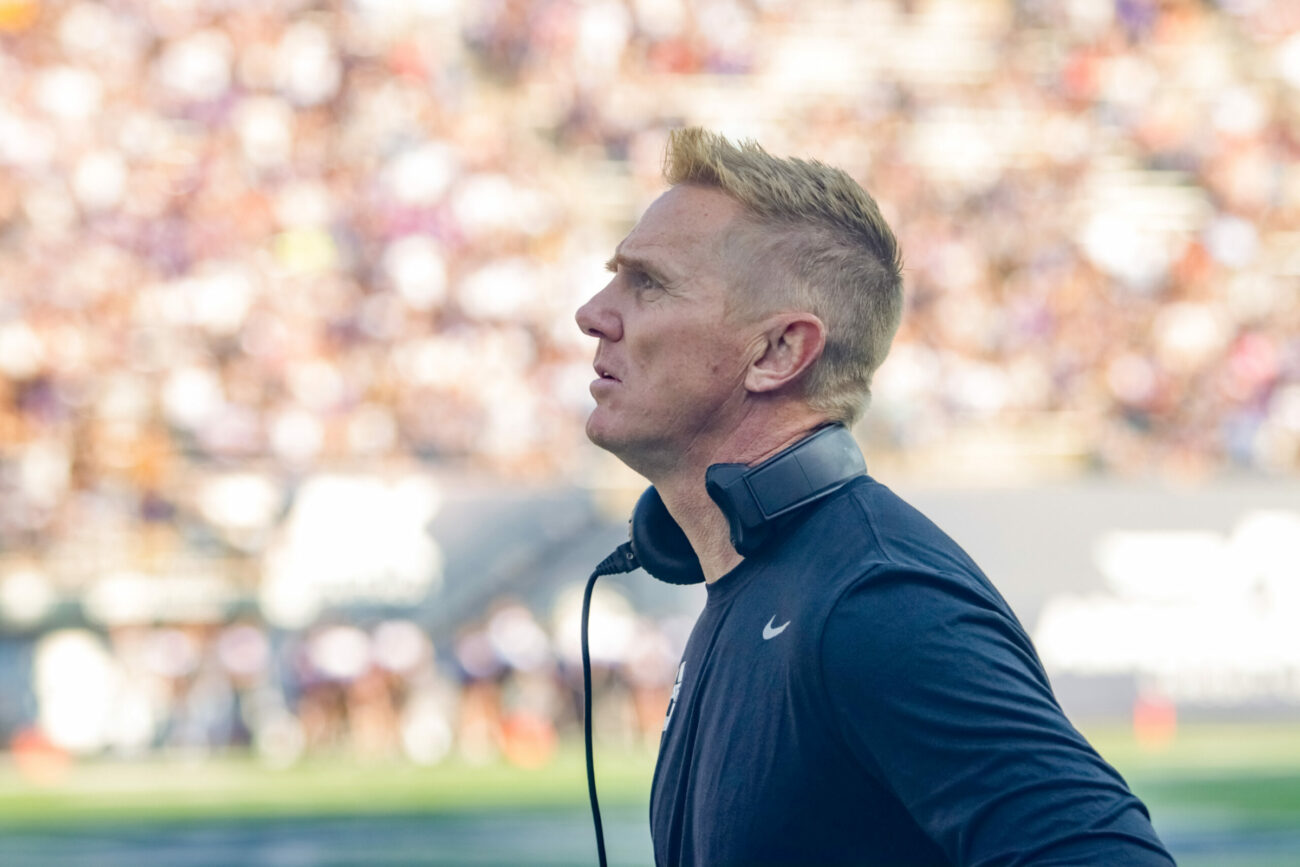Pinned: A Look Inside USU’s Insect Library

Winding through a labyrinth of hallways in the basement of the Biology and Natural Resources building, the Utah State University Insect Library appears just when one feels entirely lost.
Row upon row of tall metal cabinets enclose wooden drawers divided into smaller white boxes, containing spider wasps, velvet ants, and bees suspended in mid-air by fine steel pins. These walls hold the stories of more than 6 million species, thousands of which have no name.
The collection started small in the early 1900s with agriculturally significant specimens such as grasshoppers and other rangeland insects, says curator James Pitts, a professor of biology who studies spider wasps. As the collection changed hands, so did the focus. In the ’20s, entomologists tucked insects native to Utah into its drawers. By the ’60s, the collection shifted to neotropical specimens, and the USDA Bee Biology and Systematics Laboratory, led by Frank Parker, began sharing its specimens.

TRAY OF SPHECIDAE /
These are undetermined apioid wasps, also known as sphecid wasps. The largest pictured is a Chalybion, a genus of mud dauber wasp that parasitize spiders. “Ichneumonids and parasitoid wasps are really important for biological control so you don’t need to use as many pesticides,” explains Brandon Claridge, a doctoral student in biology. Ichneumonids are also poorly known in the United States. “It’s hard to overstate just how little we know, just in terms of like basic diversity, what species occurs here and how many there are. The opportunities for research are pretty wide open.”
The collection today has more than doubled in size and has more than 70% wasps, in part because before 2016, the American Entomological Institute, a private collection of the biggest collection of ichneumonid wasps in the United States, relocated to USU. At the time, it was languishing in a remote pocket of Florida, Pitts says. “It’s a very important group, but no one in the United States was getting trained [in it].”
Now, every summer, undergraduates and graduate students mount another 50,000 specimens for the collection. But why pin so many? Apart from assessing species variation, Pitts says, the collection may help scientists determine how species evolved and if their populations are changing over time. These old insects still have value, he says.

TRAY OF VELVET ANTS /
There are more than 400 species of velvet ants, which prey on bees. For many nocturnal species, scientists don’t even know what the females look like. That is why work like James Pitts’ on Mutillidae (velvet ants), which examines the genetic data to build evolutionary trees, can be used to not only link males and females of a given species, but see how certain traits evolve, Claridge says. “You can determine the biogeographic history, how they dispersed, how their distribution has been shaped by tectonic history or mountain building.” Photo by Levi Sim.
In 2019, the first global review of insect populations found that nearly half are declining and nearly a third may go extinct within a few decades, due primarily to habitat loss and pollution. Perhaps envisioning a world with fewer bugs is easy, even appealing for many people. But what about animals that depend on them for food, plants that require pollinators to fruit, or agricultural pests without predators?
While scientists have noted bee populations at risk, the status of other Hymenoptera, such as ants and parasitoid wasps, “remains practically unknown to this date,” Pitts explains. And as insect populations disappear off the map, some perish without being described or understood.

CLOSE-UP OF VELVET ANTS /
A male and female pair of velvet ants or Mutillidae. Without
genetic data, matching them can be difficult. While they
look like ants, they are actually wasps. Only males have wings.
“This is our back log,” he says, opening the freezer, revealing bags of insects cast in ice. Many are from Parker, who, despite retiring, still donates thousands of specimens each year. Pitts estimates the cache represents about 200,000 specimens waiting to be defrosted, separated, and pinned.
Eventually, they may get their due — like Anthophora pueblo, a bee first described by USU doctoral student Michael Orr in 2016. He studied nests collected by Parker in Utah’s San Rafael Desert where the bees burrowed into sandstone walls, potentially providing added protection from microbes, flooding, or erosion. It just took 40 years to uncover.

CLOSE-UP OF DIPHYUS FROM LOGAN CANYON /
Brandon Claridge rarely goes hiking without a net to collect specimens —
many of which turn out to be undescribed. It also serves as a teaching
moment. Many people are surprised at how little we know of insects, he
says. “There is this one species that occurs along the foothills outside
of Green Canyon and a little inside Green Canyon,” he says. “I have
never seen it in the collection here … The only thing I know of it right now
is that it is right along our foothills. People probably see it every summer,
but it is just something that is a complete unknown to everyone but me.
Photo by Brandon Claridge.
When entomologists like Pitts and Parker collect Hymenoptera in the field, they set malaise traps that attract bugs by the hundreds, snagging them in pouches mounted at the top. The “bycatch,” Pitts notes, is sent to other insect libraries that specialize in those species. He tilts forward a drawer of Diapriidae, wasps so tiny they are visible on the pin only by their wings.
“And they get even smaller,” he says. “We don’t even know what they do.”
Pitts slides open a drawer of black and tan velvet nocturnal wasps collected in South America. Several boxes have lime green tags affixed to them.
“Each one that has a number is a specimen that doesn’t have a name,” Pitts says.
At least, not yet.
By Kristen Munson
Photos by Eli Lucero






